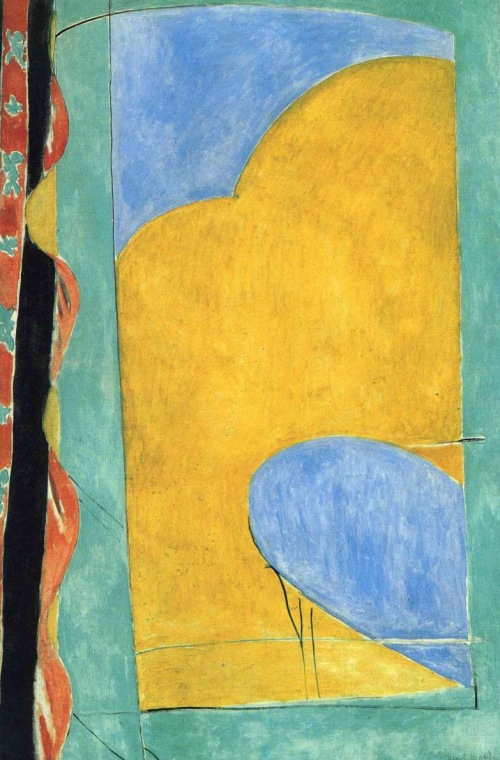Abstract art is not just a mixture of colourful meaningless patterns and arbitrary shapes.
There is, I believe, a definate therapeutic value to be found in most of the enigmatic marks made by the very different styles available today. What appears to be the most important decision to make is a very careful consideration of the specific audience in conjunction with the choosing of the appropriate artwork. This is not something to be taken lightly or quickly. This can cover anybody within the wide spectrum of individual audiences: a busy boardroom environment or a single office or room where quick thinking, fast reactions, and serious decision making is required; or a worker who returns from a hard days work simply wanting to be visually massaged by an easily observed enigma; or even the space inwhich the desperate and mostly misunderstood person who is gradually loosing their tentative hold on the sense of reality. There is a tremendous variety of possibilities.
 |
| Henri Matisse, The Yellow Curtain, 1915. With his Fauvist color and drawing Matisse comes very close to pure abstraction. (Photo credit: Wikipedia) |
Here are some suggested associations from one artists point of view:
Colour plays an obvious healing and therapeutic role to be found in a carefully selected crafted piece, and so colour-field work, which is growing in popularity, first conceived by artists like Mark Rothko and Ellsworth Kelly with their vast areas of empty colour space, might add a general feeling of peace and quiet to an otherwise noisy and hectic environment. With there being very few variations within such a large image a gentle sense of immersion into abstract stillness can slow down any fretful or irratic thinking, and even assist with the adrenal challenge of a creative.
Indefinate shapes or patterns by the likes of Jackson Pollock, Peter Lanyon, and Howard Hodgkin (again, similar works inspired by these very different abstract styles can be seen in many exhibitions, shops and galleries), show a very positive association, and may perhaps persuade a mind filled with illogical thoughts to pause, simply take in the apparent spontenaiety, and then take a different direction. Hodgkin style works in particular can be seen as puzzle like canvases inwhich the observer has no real point of reference so is free to "start" anywhere upon the picture. And because there are very few defined areas sometimes the observer inevitably finds themself either regarding the piece with little emotion, and therefore can freely make a comment - positive or not.
Let us not deny, however, the fact that many an image that has the potential to provoke a negative response can also be of great value to the observer who might actually benefit from seeing such a challenging picture that bears such a bad association. Better there on the wall than here inside the head. In this case the classic associations of red for blood and danger, black for death and sin, brown for decay and illness, along with dramatic lines and movements found in a painting are equally valuable stimulii if revealed within the appropriate environment. This comes back to my point made at the beginning - when choosing a picture, very careful consideration must be taken in order to find that one work of art which speaks directly to the very deepest parts of the observer.
